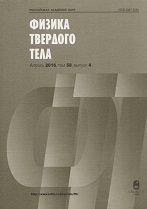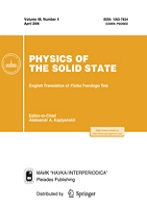|
This article is cited in 1 scientific paper (total in 1 paper)
Surface physics, thin films
Layered Ruddlesden–Popper perovskites with various thicknesses for stable solid-state solar cells
A. M. Bakhshayesha, H. Abdizadehab, M. Mirhosseinic, N. Taghaviniac
a School of Metallurgy and Materials Engineering, College of Engineering, University of Tehran, P.O. Box 14395-515, Tehran, Iran
b Center of Excellence for High Performance Materials, University of Tehran, P.O. Box 14395-515, Tehran, Iran
c Department of Physics, Sharif University of Technology, P.O. Box 11155-9161, Tehran, Iran
Abstract:
The present research comes up with optimizing the layers thickness of a Ruddlesden–Popper perovskite with the general formula of (S$_{0.97}$S’$_{0.03}$)$_2$[Cs$_{0.05}$(FA$_{0.097}$MA$_{0.03}$)$_{0.95}$]$_{n-1}$Pb$_n$(I$_{0.97}$Br$_{0.03}$)$_{3n+1}$ for efficient, stable solar cell applications. Such a triple-cation quasi-two-dimensional (2D) structure simultaneously contains two spacers, namely 5-ammonium valeric acid iodide (S) and tetra-$n$-octylammonium bromide (S'). Systematic studies showed that morphology, crystal structure, optical properties, photovoltaic performance, and internal resistances of this compound depended upon the value of the $n$ integer. Field emission scanning electron microscopy set forth that the deposited films were composed of various morphologies depending on the $n$ value. An increase in the n value resulted in improving the light absorption, reducing the band gap energy, and blue-shifting the photoluminescence peak. So as to fabricate solar cells, CuInS$_2$ nanoparticles were employed as a novel hole-transporting material. The device based on the film having $n$ = 4 value showed the highest power conversion efficiency of 10.2%. Electrochemical impedance spectroscopy demonstrated that the improved performance of this cell was mainly thanks to its low series resistance (11.68 $\Omega$), high charge recombination resistance (922.35 $\Omega$), and long electron lifetime (8.05 $\mu$s) as compared to all the fabricated cells. Moreover, this cell displayed a maximum external quantum efficiency of 82
Keywords:
ruddlesden Popper structure, 2D triple-cation perovskite, solar cells, tetra-$n$-octylammonium bromide.
Received: 01.11.2019
Revised: 05.11.2019
Accepted: 08.11.2019
Citation:
A. M. Bakhshayesh, H. Abdizadeh, M. Mirhosseini, N. Taghavinia, “Layered Ruddlesden–Popper perovskites with various thicknesses for stable solid-state solar cells”, Fizika Tverdogo Tela, 62:3 (2020), 472; Phys. Solid State, 62:3 (2020), 529–541
Linking options:
https://www.mathnet.ru/eng/ftt10197 https://www.mathnet.ru/eng/ftt/v62/i3/p472
|


| Statistics & downloads: |
| Abstract page: | 58 | | Full-text PDF : | 17 |
|





 Contact us:
Contact us: Terms of Use
Terms of Use
 Registration to the website
Registration to the website Logotypes
Logotypes









 Citation in format
Citation in format 
